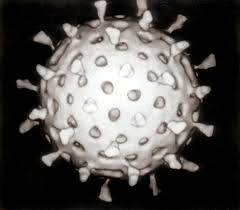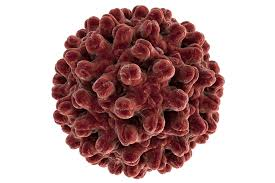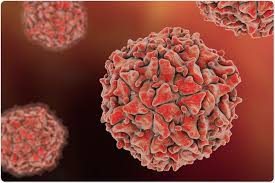Viral GIT Infections
📌 Gastroenteritis Overview
Gastroenteritis is inflammation of the stomach and intestines caused predominantly by viruses.
Common Viral Causes:
Rotaviruses – Affects young children
Caliciviruses – Includes Norovirus
Astroviruses
Adenoviruses
Seasonal Trends:
Norovirus is most common in winter
Often referred to as Winter Vomiting Disease
🌀 Rotavirus

Structure & Characteristics:
Spherical, non-enveloped virus
Has glycoprotein spikes on the capsid aiding in attachment
Transmitted via the faecal-oral route
Extremely contagious – up to 100 trillion virions/g of stool
Clinical Impact:
Major cause of infantile gastroenteritis
Self-limiting with proper fluid and electrolyte support
Vaccination available in the UK
Proven to reduce hospitalisations significantly (e.g. Ireland: 840 → 309 cases/year)
🧬 Viral Entry & Replication:
Targets mature enterocytes at tips/middle of villi in the small intestine
Enters cell via endocytosis into endosomes
Released into cytoplasm
Lipid droplets form viroplasms for viral replication
🔄 Rotavirus Replication Cycle:
Requires elevated intracellular Ca²⁺
Produces NSP4 (an enterotoxin)
Binds epithelial cells → increases Ca²⁺
Activates Cl⁻ channels → osmotic diarrhoea
Stimulates 5-HT (serotonin) → increases gut motility
🦠 Norovirus (a Calicivirus)
General Info:
First identified in 1968 (Norwalk, Ohio)
Belongs to Caliciviridae
Includes 7 genogroups, subdivided into genotypes
Major cause of outbreaks in England and Wales
🐚 Transmission Sources:
Shellfish:
Linked to outbreaks due to sewage contamination
76% of UK oysters (2011) tested positive for Norovirus
Fresh Produce:
Leafy greens and berries can carry virus
Contamination via irrigation water, equipment, handlers
🧬 Infection & Symptoms:
Low infective dose
Incubation: 15–48 hours
Duration: 1–2 days
Symptoms:
Nausea, projectile vomiting, watery diarrhoea
Occasionally: fever, headache, aches, cramps
🌍 Spread & Prevention:
Virus-laden vomit contaminates environment
Transmitted via surfaces, hands, objects
Preventative Steps:
Avoid food handling while ill
Use disinfectants
Avoid sharing personal items
Stay away from school, A&E, etc.
🧬 Hepatitis E Virus (HEV)

Once thought to be a calicivirus, now in its own family
Transmitted via the faecal-oral route
Infects the liver (Enteric hepatitis)
Fatalities more likely in pregnant women
Possibly due to immune and hormonal changes
May replicate in placenta
✨ Astroviruses
Causes diarrhoea, typically no vomiting
Common in young children (90% seroprevalence by age 5)
Symptoms last 1–4 days
May work by disrupting gap junctions between gut cells
🧬 Enteroviruses
Includes:
Poliovirus
Echovirus
Coxsackievirus
Transmission: Waterborne, faecal-oral
Seasonal: More common in summer & autumn
🦠 Poliovirus:

Affects CNS but transmitted enterically
3 serotypes, 4 disease outcomes:
Asymptomatic – 90%
Minor polio – fever, malaise, sore throat
Non-paralytic – CNS involvement, back pain
Paralytic polio – spinal cord & brain invasion → paralysis
🦠 Echoviruses:
Echovirus 30 (E30): major pathogen
Transmitted faecal-orally
Causes viral meningitis, colds
Significant outbreaks (2016–2018)
🦠 Coxsackieviruses:
Coxsackie A:
Causes lesions, fever, hand-foot-and-mouth disease
Self-limiting
Coxsackie B:
Transmitted orally
Affects heart (myocarditis) and pancreas
Can lead to diabetes by destroying islets of Langerhans
🧬 Hepatitis A Virus (HAV)
Spread via faecal-oral route
Not cytolytic
Resilient – survives on surfaces, chlorine-resistant
Incubation: ~1 month
Symptoms:
Fatigue, nausea, anorexia, fever
Jaundice – caused by immune attack on infected liver cells
Children often asymptomatic
🦠 Emerging Virus: Aichi Virus
Family: Kobuvirus, named for its bumpy structure
Hosts: Humans, pigs, cats, dogs
Replication:
Enters via endocytosis
Uncoating poorly understood
Uses host ribosome for protein synthesis
Proteins drive production of viral RNA and particles
Symptoms:
Targets intestinal villi, causing diarrhoea
Immature cells can't absorb properly → nutrient and water loss
Riskier for immunocompromised individuals
✅ Key Takeaways
Rotavirus and Norovirus are leading causes of viral gastroenteritis; both spread faecal-orally and cause diarrhoea.
Vaccination has significantly reduced Rotavirus-related hospitalisations.
Norovirus spreads rapidly via vomit and contaminated surfaces—hygiene is critical.
Hepatitis A and E affect the liver but have different severities and population risks.
Astroviruses, Enteroviruses, and Emerging viruses like Aichi contribute to varying GI illnesses, often seasonal or age-specific.
Enteroviruses can also have systemic effects—e.g., polio, myocarditis, or meningitis.
Understanding transmission and replication mechanisms is crucial to prevention and control.